
Shedding light on rare diseases: open data and model organisms
Why open data from model organisms is essential for rare disease research.
2023
perspectivesscience

Why open data from model organisms is essential for rare disease research.
2023
perspectivesscience

Jo McEntyre talks about data services, open data and a new era for research assessment.
LAB MATTERSPEOPLE & PERSPECTIVES2023
lab-matterspeople-perspectivesperspectives

Microbial communities play essential roles in ocean ecology and planetary health. A recent publication highlights priorities for understanding and protecting ocean microbiomes.
SCIENCE & TECHNOLOGY2022
sciencescience-technology
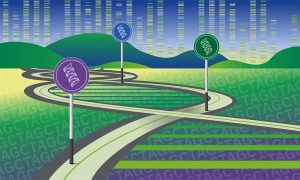
Scientists identify previously unexplored gene segments to be added to human genome databases.
SCIENCE & TECHNOLOGY2022
research-highlightssciencescience-technology

EMBO Director Fiona Watt discusses preprints, data sharing, and evaluation in light of EMBL’s new Open Science policy
LAB MATTERSPEOPLE & PERSPECTIVES2022
lab-matterspeople-perspectives
Gene expression wave in the lower part of the future vertebrae column of a mammalian embryo. As the wave goes forward, new pre-vertebrae are formed and the future vertebrae column elongates. (Image and video credit: Nature) In a nutshell: The size of pre-vertebrae in a mammalian embryo is…
SCIENCE & TECHNOLOGY2012
sciencescience-technology
In a nutshell : The gut metagenome is the collection of all the genomes of all the microbes in the human intestinal tract : it is specific to each human, like a second genetic signature At least in healthy humans, this personal metagenome is stable over time The gut metagenome is…
SCIENCE & TECHNOLOGY2012
sciencescience-technology
In a nutshell: 1st map combining human genetic variation at different scales – from single letters to large chunks Based on genomes of 1092 healthy people from Europe, the Americas and East Asia Could help identify genetic causes of disease, rather than just links Data made freely available in…
SCIENCE & TECHNOLOGY2012
sciencescience-technology
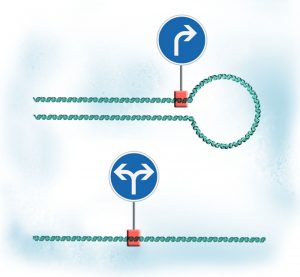
In a nutshell: Looping and unlooping DNA adjusts readout from gene and spread of regulation throughout the genome When a gene forms a loop, its output increases, as the transcription machinery that reads it is trapped into moving only along that gene When the gene loop is undone, transcription…
SCIENCE & TECHNOLOGY2012
sciencescience-technology
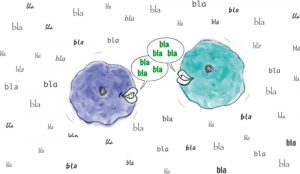
In a nutshell: New method allows precise analysis of proteins released by cells over time (distinguishes them from proteins in the cells’ culture serum) Advantages: cells don’t have to be starved: avoids bias and allows more cell types to be studied; can follow fast reactions like immune…
SCIENCE & TECHNOLOGY2012
sciencescience-technology
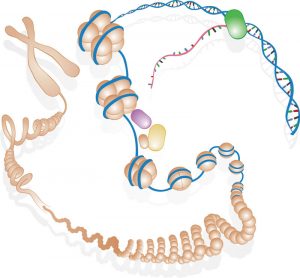
Today, an international team of researchers reveal that much of what has been called ‘junk DNA’ in the human genome is actually a massive control panel with millions of switches regulating the activity of our genes. Without these switches, genes would not work – and mutations in these regions…
SCIENCE & TECHNOLOGY2012
sciencescience-technology
Scientists at the European Molecular Biology Laboratory (EMBL) in Heidelberg, Germany, have combined the power of two kinds of microscope to produce a 3-dimensional movie of how cells ‘swallow’ nutrients and other molecules by engulfing them. The study, published today in Cell, is the…
2012
sciencetechnology-and-innovation
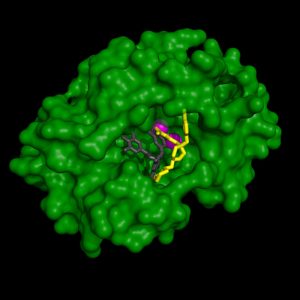
Researchers at the European Molecular Biology Laboratory (EMBL) in Grenoble, France, have determined the detailed 3-dimensional structure of part of the flu virus’ RNA polymerase, an enzyme that is crucial for influenza virus replication. This important finding is published today in PLoS…
SCIENCE & TECHNOLOGY2012
sciencescience-technology

What do you get when you dissect 10 000 fruit-fly larvae? A team of researchers led by the EMBL- European Bioinformatics Institute (EMBL-EBI) in the UK and the Max Planck Institute of Immunobiology and Epigenetics (MPI) in Germany has discovered a way in which cells can adjust the activity of many…
SCIENCE & TECHNOLOGY2012
sciencescience-technology
Italy has pledged to participate in ELIXIR, a major undertaking to safeguard the results of life science research in Europe. With one of Europe’s larger economies now demonstrating its commitment to ELIXIR, this burgeoning research infrastructure is well placed to continue its excellent progress.…
CONNECTIONS2012
connectionsscience
A traffic policeman standing at a busy intersection directing the flow of vehicles may be a rare sight these days, but a similar scene appears to still frequently play out in our cells. A protein called Lem4 directs a crucial step of cell division by preventing the progress of one molecule while…
SCIENCE & TECHNOLOGY2012
sciencescience-technology
Savira pharmaceuticals GmbH, a spin-off of the European Molecular Biology Laboratory (EMBL) based in Vienna, Austria, has signed a collaboration and license agreement with Roche, thus further strengthening the links between fundamental research and major pharmaceutical development companies. This…
SCIENCE & TECHNOLOGY2012
sciencescience-technology
As a retrovirus matures, the two parts of its shell protein (red and blue or yellow and blue) dramatically rearrange themselves, twisting and moving away from each other. (Credit: EMBL/T.Bharat) Scientists at the European Molecular Biology Laboratory (EMBL) in Heidelberg, Germany, have for the…
SCIENCE & TECHNOLOGY2012
sciencescience-technology
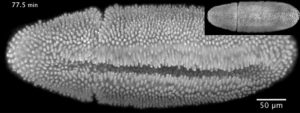
“This video shows a fruit fly embryo from when it was about two-and-a-half hours old until it walked away from the microscope as a larva, 20 hours later,” says Lars Hufnagel, from the European Molecular Biology Laboratory (EMBL) in Heidelberg, Germany. “It shows all the hallmarks of fruit fly…
SCIENCE & TECHNOLOGY2012
sciencescience-technology
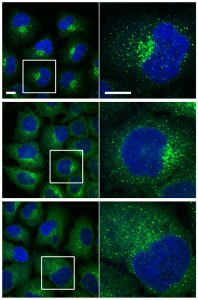
Scientists at the European Molecular Biology Laboratory (EMBL) in Heidelberg, Germany, have conducted the first comprehensive census of human cells’ export workers. In a study published online today in Nature Cell Biology, they found an unexpected variety of genes involved in transporting…
SCIENCE & TECHNOLOGY2012
sciencescience-technology
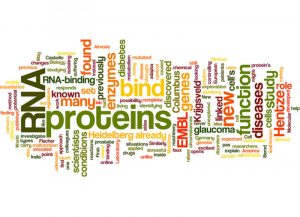
In one of the most famous faux pas of exploration, Columbus set sail for India and instead ‘discovered’ America. Similarly, when scientists at the European Molecular Biology Laboratory (EMBL) in Heidelberg, Germany, set out to find enzymes – the proteins that carry out chemical…
SCIENCE & TECHNOLOGY2012
sciencescience-technology

These spheres may look almost identical, but subtle differences between them revealed a molecular version of the robots from Transformers. Each sphere is a vesicle, a pod that cells use to transport materials between different compartments. The images, produced by Marco Faini from John…
SCIENCE & TECHNOLOGY2012
picture-of-the-weekscience-technology
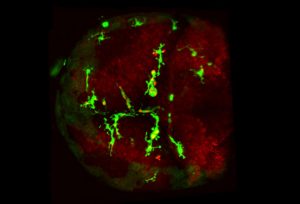
Like emergency workers rushing to a disaster scene, cells called microglia speed to places where the brain has been injured, to contain the damage by ‘eating up’ any cellular debris and dead or dying neurons. Scientists at the European Molecular Biology Laboratory (EMBL) in Heidelberg, Germany,…
SCIENCE & TECHNOLOGY2012
sciencescience-technology
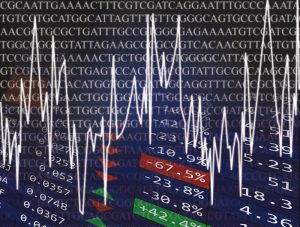
Just as banks store away only the most valuable possessions in the most secure safes, cells prioritise which genes they guard most closely, researchers at the European Molecular Biology Laboratory’s European Bioinformatics Institute (EMBL-EBI) have found. The study, published online today…
SCIENCE & TECHNOLOGY2012
sciencescience-technology
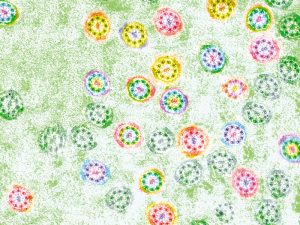
As spring arrives, flowers seem to bloom everywhere – even under the microscopes at the European Molecular Biology Laboratory (EMBL) in Heidelberg, Germany. But the ‘flowers’ in this picture actually help an animal, not a plant, to pass on its genes. The image, which has been false-coloured…
SCIENCE & TECHNOLOGY2012
picture-of-the-weekscience-technology
Like any law-abiding train passenger, a molecule called oskar RNA carries a stamped ticket detailing its destination and form of transport, scientists at the European Molecular Biology Laboratory (EMBL) in Heidelberg, Germany, have found. They show that for this molecule, moving in the…
SCIENCE & TECHNOLOGY2012
sciencescience-technology
Today a consortium of leading IT providers and three of Europe’s biggest research centres (CERN, EMBL and ESA) announced a partnership to launch a European cloud computing platform. ‘Helix Nebula ‐ the Science Cloud’, will support the massive IT requirements of European…
SCIENCE & TECHNOLOGY2012
sciencescience-technology
The bacterium Mycoplasma pneumoniae, which causes atypical pneumonia, is helping scientists uncover how cells make the most of limited resources. By measuring all the proteins this bacterium produces, scientists at the European Molecular Biology Laboratory (EMBL) in Heidelberg, Germany, and…
SCIENCE & TECHNOLOGY2012
sciencescience-technology
Breakthroughs in biomedical science are a step closer today, with the launch of a new distributed research infrastructure for the science of structural biology: Instruct. The launch of Instruct will give academic and commercial scientists across Europe access to a full portfolio of integrated…
SCIENCE & TECHNOLOGY2012
sciencescience-technology
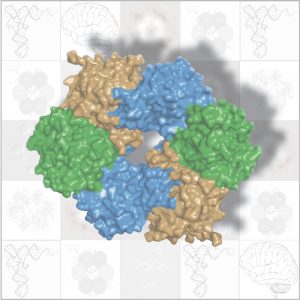
In fairy tales, magic rings endow their owners with special abilities: the ring makes the wearer invisible, fulfils his wishes, or otherwise helps the hero on the path to his destiny. Similarly, a ring-like structure found in a protein complex called ‘Elongator’ has led researchers at the…
SCIENCE & TECHNOLOGY2012
sciencescience-technology
Myomesin stretching to 2.5 times its length. Credit: EMBL/Wilmanns. In this video, a protein called myomesin does its impression of Mr. Fantastic, the leader of the Fantastic Four of comic book fame, who performed incredible feats by stretching his body. Scientists at the European Molecular Biology…
SCIENCE & TECHNOLOGY2012
sciencescience-technology
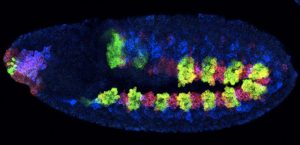
If you wanted to draw your family tree, you could start by searching for people who share your surname. Cells, of course, don’t have surnames, but scientists at the European Molecular Biology Laboratory (EMBL) in Heidelberg, Germany, have found that genetic switches called enhancers, and the…
SCIENCE & TECHNOLOGY2012
sciencescience-technology
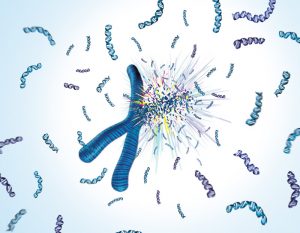
An inherited mutation in a gene known as the guardian of the genome is likely the link between exploding chromosomes and some particularly aggressive types of cancer, scientists at the European Molecular Biology Laboratory (EMBL), the German Cancer Research Centre (DKFZ) and the University…
SCIENCE & TECHNOLOGY2012
sciencescience-technology
A team of geneticists and computational biologists at the European Molecular Biology Laboratory’s European Bioinformatics Institute (EMBL-EBI), the Wellcome Trust Sanger Institute and Cancer Research UK reveal how an ancient mechanism is involved in gene control and continues to drive genome…
SCIENCE & TECHNOLOGY2012
sciencescience-technology
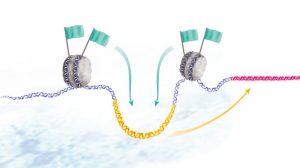
As an embryo develops, different genes are turned on in different cells, to form muscles, neurons and other bodily parts. Inside each cell’s nucleus, genetic sequences known as enhancers act like remote controls, switching genes on and off. Scientists at the European Molecular Biology Laboratory…
SCIENCE & TECHNOLOGY2012
sciencescience-technology
No matching posts found